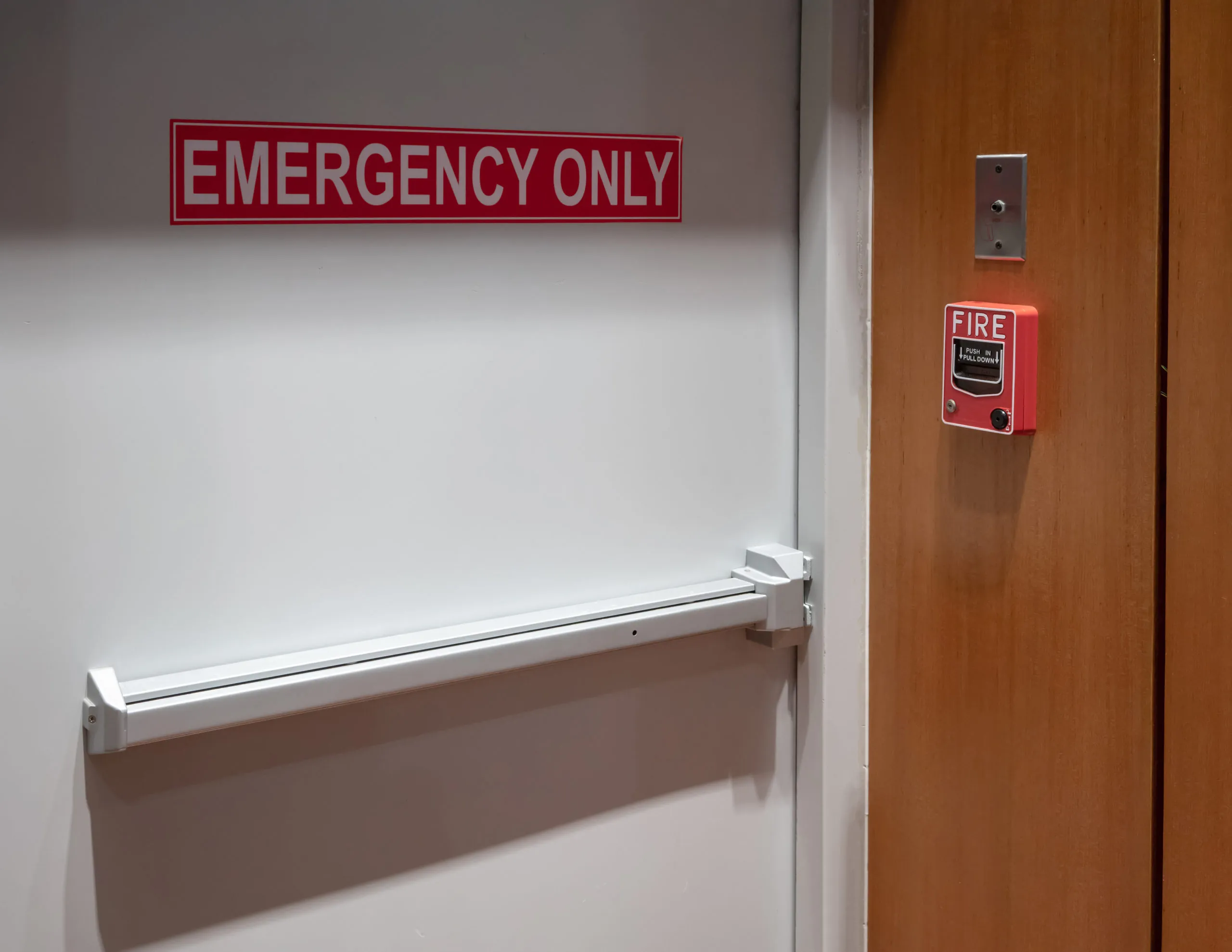Panic Door Hardware Compliance: What Facilities Must Know

When emergencies strike, every second counts. Whether a fire breaks out, or an electrical malfunction occurs, panic door hardware makes sure that people can safely leave the building. Facility managers in commercial, government, and healthcare must understand these systems and their compliance requirements to protect lives and meet state and national building codes.
Understanding Panic Door Hardware and Its Purpose
Panic door hardware allows people to open a locked door from the inside without using a key or code. By simply pushing a horizontal bar, the door unlatches instantly, ensuring quick egress during emergencies. Modern systems combine physical safety with digital functionality, which integrates seamlessly with access control basics and electrified door hardware for both security and compliance.
Facilities that serve the public, like hospitals, schools, government offices, and shopping centers, need to install panic hardware at designated exits. The International Building Code (IBC) and the National Fire Protection Association (NFPA) have outlined these requirements to maintain safety and support accessibility and fire protection systems.
Code Requirements Facilities Must Follow
The IBC and NFPA require panic hardware on doors in spaces where large numbers of people gather. The NFPA 101 Life Safety Code mandates panic bars for assembly areas with occupancy loads of 50 or more. Educational and institutional occupancies must meet these standards to pass inspection.
Local jurisdictions often adopt these national codes with additional modifications. Facility managers must ensure their panic door hardware aligns with both state and municipal safety codes. Since local enforcement can vary, managers benefit from consulting professionals who are familiar with multi-jurisdictional compliance, especially those experienced in government project work and healthcare project work.
The Americans with Disabilities Act (ADA) also influences panic door design. Devices must allow easy use by individuals with limited strength or dexterity. This helps to make sure that everyone can exit buildings safely while they are under stress.
Integration With Security and Building Systems
Modern panic door systems extend beyond mechanical function. Many facilities now link panic hardware with digital access control and alarm systems to streamline safety and security. Integrating panic bars with fire alarms ensures that emergency exits unlock automatically during an alarm event. This keeps people from becoming trapped inside in emergencies while maintaining secure conditions during normal operation.
Additionally, panic hardware can connect with intrusion detection and building automation systems, creating a synchronized safety response during emergencies. A triggered panic door might simultaneously activate a security camera, notifying personnel to review footage according to guidelines in the surveillance laws guide.
Emergency operations centers rely heavily on these integrated systems. Facilities specializing in emergency operations must maintain uninterrupted access control, alarm, and egress capabilities under high-stress conditions. A single compliance gap in panic hardware can delay evacuation or compromise a secure perimeter.
Common Compliance Mistakes to Avoid
Many facilities fail inspections because of simple oversights. Some install noncompliant locks or modify panic bars in ways that restrict free egress. Others overlook periodic testing and maintenance, allowing dust, paint, or corrosion to interfere with proper operation.
Some older buildings use outdated hardware that no longer meets current IBC or NFPA standards. Replacing those devices with modern, ADA-compliant hardware prevents potential fines and liability. Facilities that use electrified door hardware must verify that power failures do not restrict egress, as electronic locks should release automatically when the building loses electricity or an alarm goes off.
When you combine panic door systems with keycard access or biometric control, it adds another layer of complexity to exiting the building. Poor system integrations can lead to conflicts between safety codes and security protocols that your building follows. Facility managers need to work with contractors who understand how to align safety regulations with advanced access systems.
The Role of Regular Testing and Maintenance
Even properly installed panic hardware can fail without a regular inspection. Facility team members must regularly check for latch alignment and visible wear. If a door requires force to open, it probably violates compliance standards.
Building codes require panic hardware to function reliably under pressure. We have technicians who specialize in access control basics and related systems and can perform comprehensive evaluations to verify that all doors release as intended. During inspections, we also confirm that fire alarm signals properly disengage door locks and that exit pathways remain unobstructed.
In hospitals and government buildings, it is even more important to maintain these systems. Facilities operating under high-security or emergency conditions cannot risk malfunctioning hardware.
How Compliance Protects Property Owners
Meeting panic hardware codes not only protects building occupants; it also shields property owners from legal and financial risk. A single violation can lead to fines and failed inspections. When your systems are compliant, it shows that your facility commits to safety.
Keeping Your Facility Safe and Compliant
Panic door hardware compliance is an important part of emergency safety in every building. Facility managers who stay ahead of inspections, prioritize integration, and maintain equipment can avoid unexpected failures and meet all required standards. At Corporate Technology Solutions, we have been protecting the Phoenix and Tucson areas for more than two decades.
Contact us today for a consultation to better safeguard your facility.







